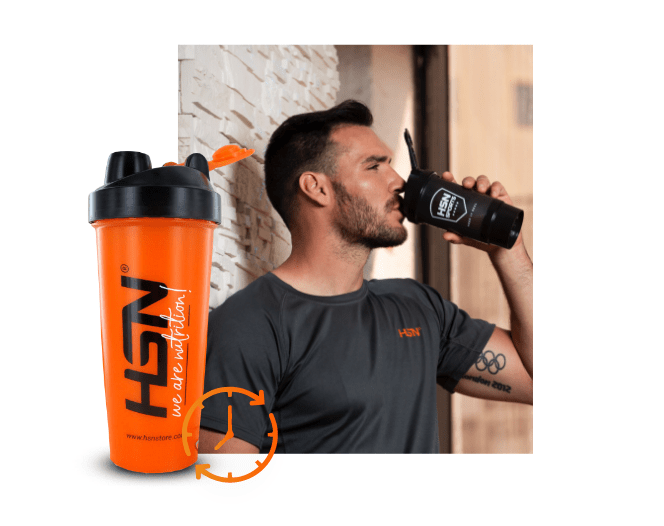Buy our creatine products in capsule or powder form. Creatine monohydrate, kre-Alkalyn, or under the Creapure® label:
-
HSN -
-
-
-
-
-
-
Buy our creatine products in capsule or powder form. Creatine monohydrate, kre-Alkalyn, or under the Creapure® label:
Are you looking for a powerful creatine food supplement for your workouts? If so, a good choice is creatine monohydrate, which is the most in-demand now.
Creatine monohydrate is an organic substance produced in the liver from three amino acids and stored in muscle fibres, making it an ideal food supplement for athletes.
HSN, we are Nutrition!
Table of contents
HSNstore creatines are developed in our plant, where they are tested for quality control, stored in our warehouses, and distributed directly from there.
That is why HSN's prices are so competitive, because as a consumer, you are buying directly from the manufacturer, which is the same distributor.

CREATINE MONOHYDRATE POWDER

The supplement with the most scientific evidence of efficacy. What else can we say?

Ultra-pure creatine is unflavoured and completely neutral, so it does not alter the taste of your shakes.

Our creatine is suitable for vegetarian and vegan diets and is produced in the absence of Genetically Modified Organisms.
It is not necessary to discontinue the use of creatine, although, for a long time, it has been recommended to stop taking creatine for periods of time to increase its effectiveness, this has not been proven and would be counterproductive. To maintain the effects of creatine, the achieved intracellular concentration must be maintained, which is essentially achieved by using 3 grams of creatine.
| Protocol | Daily Amount | Duration |
| General Dose (Recommended) | 3 grams | Continued |
| Individualised Dose (Not recommended) | 1 grams x 10 kg body weight | Continued |
| With loading phase (Not recommended) | 10-20 grams 5-10 grams 0 grams | 1 week 3-4 week 2 week |

Creatine monohydrate can be combined with many food supplements, as it does not interact negatively with them. Athletes use it to achieve a synergistic effect with both compounds.
Protein shakes are an excellent source of amino acids, which are the building blocks of muscle protein, while creatine increases the ability of muscle mass to produce energy during intense exercise.
Combining creatine with BCAA's is effective in increasing protein synthesis and improving muscle recovery. Creatine increases energy production and BCAA's are essential for muscle building. Together, they improve performance and training results.
Creatine monohydrate and glutamine are popular supplements in fitness and sports nutrition. Both are essential amino acids in the body, important for cell and protein synthesis and muscle recovery.
HSN offers high-quality creatine monohydrate in powder and capsule format, developed by its R&D&I team and manufactured in its own facilities under the highest quality standards and without intermediaries that make the process more expensive. You can find creatine with Creapure® raw material and its alternative used with a top-quality raw material but without an associated trademark.
Buying creatine monohydrate by HSN is the best option because of the many advantages for you: price, promotions, offers, discount coupons, factory direct purchase; but also because of the fast delivery of your order.
Don't miss our Black Friday and Cyber Monday categories.
Trust only the best!
HSN, We are Nutrition!

HSN is an excellent choice. Our creatine supplements are developed by our R&D&I team and manufactured in our own facilities under the highest quality standards.
Try the Creapure® raw material creatine option, as well as a high-quality, non-branded alternative at the best prices and with the HSN safety seal.
There are several types of creatine in the sports nutrition and supplementation market, but the three most common types are creatine monohydrate, alkaline creatine, and creatine Creapure.

Specialist in Research, Development and Product Innovation. His passion for innovation and continuous improvement ensures that every product developed is of the highest quality and effectiveness.